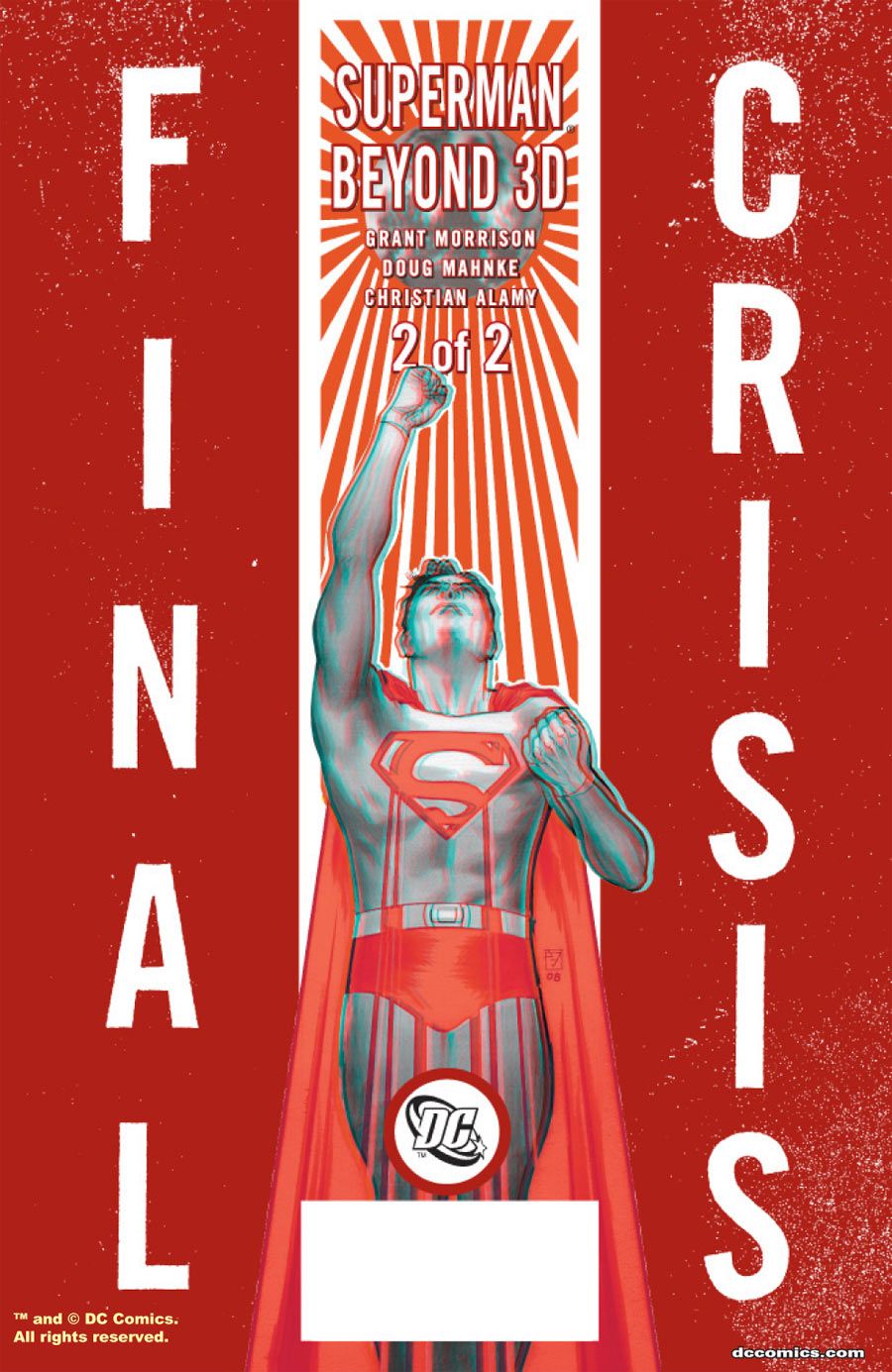Much ado was made about last week's "Final Crisis" #6, where it was revealed that Superman was okay after his adventures in "Final Crisis: Superman Beyond 3D" before the concluding chapter of that story was released. Was there any doubt? Sure, at the end of the first issue, things looked grim, but did anyone doubt that Superman would prevail and save the day? He's Superman! And, yeah, he saves the day.
Grant Morrison always said that "Final Crisis: Superman Beyond 3D" was a little detour for the character that happens between the pages of "Final Crisis," and was, in many ways, a thematic twin to "Final Crisis." In both, the "dark god" is destroying everything, but where Darkseid wreaks havoc on only one world, Mandrakk the Dark Monitor does so on a level that will affect all 52 worlds in the multiverse and the reality that houses them. Mandrakk's return is the cause of the various "crises" that affect the multiverse and Morrison, once again, utilizes a fractal pattern in his storyline.
Picking up immediately after the end of the first issue, Mandrakk has returned, Overman has betrayed his fellow Supermen, and the Monitor who gathered them, Zillo Valla, may be evil, too. But, never fear, because "Sounds like a challenge to me," Superman simply says. Morrison's Superman stories showcase nothing other than the biggest and best in heroics where good wins, evil loses, and everyone who bears witness is inspired by Superman's example.
Here, Morrison takes it a step further by having his fellow Supermen follow his lead and become better, using their innate and unique qualities to rise above their behavior in the first issue. Billy Batson is revealed as the secret weapon that Captain Marvel wields, while Captain Adam acts as the catalyst for Superman's ascension to fight Mandrakk using Dax Novu's ultimate weapon. There is a reason why Morrison chose these Supermen, which he has Zillo Valla state explicitly.
Not only is this a fight between good and evil, it's a battle of stories, of narratives. The Monitors were "corrupted" by narrative, but they learn here that it wasn't a corruption, not really. Some may be turned off by Morrison's descriptions like "I'm inside a self-assembling hyper story! And it's trying its best to destroy me," but that just points to the central truth of the story: Superman, defender of life against the Mandrakk, the anti-life.
Not to be outdone, Doug Mahnke delivers some of the best art of his career here and does nothing but whet appetites for next week's "Final Crisis" #7. His art makes the epic battle of good and evil feel just as large and just as epic as it is written. He also handles the quieter, more human moments well, grounding them despite their surroundings. He seems to understand that this really is a small, human story about a man trying to save his wife and doing anything he can to do so.
Even the use of 3D feels more necessary here, more integral. While it felt arbitrary at times in the first issue, it's used much more consistently here. The Monitors' reality comes across as a higher level of perception and being as a result of the 3D.
In many ways, a post-script to his "All-Star Superman," "Final Crisis: Superman Beyond 3D" acts as a macro version of Grant Morrison's "Final Crisis" and provides a glimmer of hope, especially on the last page. Morrison understands the fundamental nature of these characters and their reality, and embraces it lovingly.
(While everything falls apart, Doug Mahnke's art remains fantastic in CBR's preview!)

